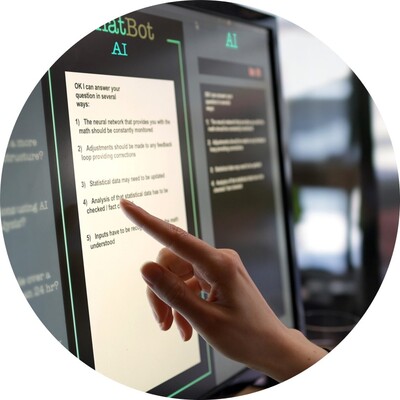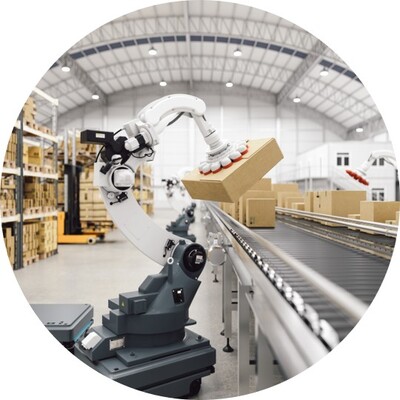Articles & Papers
PE/VC Trends Report: Technology Edition
Spotlight on Tech Trends

AI turbocharges software, SaaS and the PE industry itself
AI is changing the outlook for software and SaaS, the global economy, private equity perspectives and the investment process itself
- Funds raised in tech have mushroomed in the last decade. The global tech sector attracted $675 billion from private equity in 2022, up from $100 in 2012.
- Growth, profitability and expansion across multiple sectors have driven the dominance of software and software as a service (SaaS); however, valuations have been depressed by more than 40 percent due to market corrections.
- This is set to change. PwC identifies AI as the “biggest commercial opportunity in today’s fast changing economy,” predicting an uptick in global GDP of 14 percent by 2030, the equivalent of $15.7tr; 45 percent of these economic gains will come from AI-enabled product enhancements.
- Disruptive technological innovations such as AI have created opportunities across a range of assets. Software, SaaS and platform organisations are leveraging AI to improve performance, increase functionality, provide tailored services and create new workstreams.
- Stakeholders, particularly private equity firms, are paying particular attention to the key structural differences between software and SaaS businesses and their use of AI, particularly as it impacts business models.
- GenAI is attracting investors to opportunities in cybersecurity, with these new technologies enlivening a dampened sector. As digitalisation gathers pace, securing the cloud and connected devices makes now a compelling time to invest. Opportunities in the software supply chain – identity, privacy and trust – is spawning active seed, Series B and C investing.
- Further VC investment is expected in new areas, such as protecting AI and organisations from disinformation risk, and machine learning models from malicious attacks. AI brings other new dimensions to cybersecurity, such as augmenting security analysts, and making traditional security operations tools easier to use,
- Private equity funds are therefore hastening to understand the impact of AI on portfolio companies, as well as how AI tools can improve their own operations, such as sourcing and evaluating new investments. Some of the world’s largest alternative asset managers, including The Carlyle Group Inc. and Blackstone Inc. are discussing the use of AI internally and at portcos on earnings calls.
- According to Coller Capital’s global PE barometer Summer 2023, between 60 to 75 percent of LPs think the use of AI will become significant in the private equity investment process itself in the next five years. Three-quarters of LPs think AI will be useful in deal origination, while 64 percent believe the technology will make a ‘significant contribution’ in the deal assessment.
- PE firms are also using AI to help with due diligence; the ability of algorithms to develop problem-solving abilities by constantly working the data ensures machine learning will play a crucial part in the future of private equity.
- It’s also important to understand the economic implications by geography. PwC suggests that China will see the greatest economic gains from AI, with a 26 percent boost to GDP in 2030. A key element of the value potential comes from China’s higher rate of capital re-investment, compared with Europe and North America, as profits are fed into increasing AI capabilities and returns.
- North America will see a 14.5 percent boost, and potentially faster than China. As productivity in China catches up with North America, exports of AI-enabled products will make their way from China to North America. Together, China and North America will achieve gains of $10.7 tr, 70 percent of the predicted global total.
- In other regions, Northern Europe is predicted to see a gain of $1.8tr, or 9.9 percent of GDP; Southern Europe will see $0.7tr, or 11.5 percent of GDP; ‘developed Asia’ (excluding China) will see $0.9tr, or 10.4 percent of GDP; and Latin America will see $0.5tr, or 5.4 percent of GDP.
- Read more on the topic:
PwC Global Artificial Intelligence Study
PwC Sizing the Prize
S&P Global Market Intelligence report
Private Equity International IPEM 2023 report
Coresignal blog
McKinsey: private equity investments in tech services
Techcrunch: VC optimism on cybersecurity
"With AI on the rise for both cloud and edge applications, the enabling semiconductor and photonics industry is also attracting massive investments, resulting in more powerful, faster, and energy-saving chips. The latter is particularly crucial to reduce the high energy consumption of AI in the cloud and decrease CO2 emissions related to large data centers. The interest in these developments by private equity (PE) firms and venture capital companies is evident. Therefore, in our assignments, we observe a high demand for leaders (CEOs and CCOs) with a strong commercial and M&A background."
- Bert Pilon
Partner, Netherlands

The Metaverse: a world of opportunity in the universe’s digital twin
-
The appeal of a world we can control drives investment in a parallel universe: exact destination unknown
-
The metaverse, for many in the computer industry the next iteration of the internet, enables humans to experience life in a single, shared, immersive, 3D virtual space in ways they could not in the physical world.
- Metaverse solutions will leverage technologies such as digital twins, and Virtual-to-Real (V2R), Real-to-Virtual (R2V), and Virtual-to-Virtual (V2V) interactions. Mixed Reality (MR) will enable teleoperation and tele-robotics, enhancing user experiences and leading to transformative commercial applications.
- Commercially, this has created new market opportunities for vendors and ancillary service providers including infrastructure, devices, software and supporting services. Metaverse digital asset marketplaces are forecast to reach nearly $300bn and virtual reality in Metaverse solutions will represent a $315bn opportunity by 2028, according to ResearchandMarkets.com.
- From an enterprise and industrial perspective, the Metaverse will impact various functions. The top five uses enterprises are implementing are: marketing campaigns or initiatives; employee learning & development; meetings in the metaverse; conferences/events; and product design/digital twinning.
- For individuals, the fusion of technology and imagination is changing day-to-day lives, most notably through social media, productivity tools, online education, blockchain applications, augmented reality and so on. “The Metaverse isn’t a trend; it’s a transformative force that is set to redefine the way we work, play and connect,” explains goingvc.com.
- Investment opportunities can be captured in four categories: content and experiences, platforms, infrastructure and hardware, and enablers (security, payments, etc.). So far, investors have been focusing on VR headsets, interactive platforms, 3D creation software, semiconductors and security. Gaming has seen the most activity.
- Venture capital and private equity investors are showing interest in the metaverse opportunity; they invested roughly 6 percent out of a total of $120bn in primarily metaverse-focused companies from January 2020 through May 2022. However, since then, recessionary fears and inflation have cooled interest and investment activity, not helped by the long timeframes involved in building the infrastructure.
- In this context, what are the attractions? The metaverse overcomes geographic and financial restrictions to bring experiences to people they otherwise would not have; consumers have shown they are prepared to spend on metaverse assets and adopt new technologies; companies are investing in the required infrastructure; brands experimenting in the metaverse encounter excited customers.
- The metaverse can be summed up by a remark made by Cliff Justice, US Leader of Enterprise Innovation, KPMG. “If history is our guide, this next phase of the Internet is going to evolve in ways we have not anticipated. While broad adoption of the metaverse may be years away, investors are playing the long game with their metaverse strategies.”
- Read more on the topic:
Cision PR Newswire: the Metaverse revolution
ResearchandMarkets.com the Metaverse market, 2023-2028
McKinsey: Value creation in the metaverse
Goingvc.com: VC and the metaverse
"Embracing the metaverse isn't just about navigating a digital landscape; it's an investment in a paradigm shift that transcends boundaries. Investors recognize its potential to unlock new dimensions in content, experiences, and infrastructure. Beyond short-term uncertainties, the metaverse represents a visionary shift, where our engagement with technology transcends conventional boundaries and enters uncharted territory. In this evolving narrative, investors are not merely reacting; they're shaping a future where the virtual and real seamlessly coalesce."
- Melody Chang
Principal, China

Robotics: a variety of challenges, a range of opportunity
Capital-intensive, robots nevertheless prove their worth, filling the empty shoes of aging populations and penetrating all end markets; a dampened sector is enlivened by the AI factor
- VC and PE firms are reaping the rewards of previous investments in robotic solution providers. Following years of scepticism about widespread adoption, the service robot market is expected to grow to $103.3 billion in 2026 from $36.2 billion in 2021.
- However, when the VC slowdown began in Q1 2022, robotics was not immune. Slowed investments were compounded by economic woes. Robotics requires a lot of money and continued commitment to get to market at scale. It’s a long-term play. The appeal of AI factors into robotics-related dealmaking maintains relative strength in the market.
- Robotics start-ups are actively attracting investment, particularly for domestic kitchen robots, serving robots for restaurants, collaborative robots for smart homes and factories, and those created for jobs that involve high speed, precision and heavy loads.
- In developed economies, baby-boomer retirement, a tight labour market and back-breaking industrial jobs with limited appeal are catalysts for the adoption of robotics. In Germany, staff shortages have been relieved by the installation of 26,000 robotic units, making it units, making it Europe’s largest robotics market.
- The construction sector suffers from low productivity, unsafe working conditions and polluting processes. Coupled with a tight labour market, the sector sees increasing attention from VC firms attracted not only by practical solutions, but also by greater efficiency in use of materials, reduced costs and lead times, increased labour safety and significant reduction in CO2 emissions.
- Robots are playing an expanding role in addressing climate change, already used across agriculture, assisting with crop maintenance, supplementing the workforce and offering tools and processes that are self-sustained through solar energy.
- Overall, robotics remains an area of interest and focus, with a number of sizeable Series B and C rounds in 2023. There’s no hype bubble; they either work or they don’t. And automation is penetrating all end markets, making it a powerful technology trend in which to invest.
- Read more on the topic:
Reuters: As baby boomers retire, German businesses turn to robots
Just Auto private equity deals
Techcrunch state of robotics investing
Pulse – robotics investment
Crunchbase: robots are still rising
"Thanks to technological innovation in recent years in areas such as cloud computing, artificial intelligence, sensors and 5G connectivity, robots are now being applied throughout the global economy at a record pace. From an investment standpoint, catalysts like wage inflation, labor shortages, demographic trends and supply chain transformation should accelerate demand for robotics for years to come. As the technology continues to improve, it will transform the way organizations operate and make the world a more efficient place."
- John McCrea
Americas Regional Practice Leader, Private Equity & Venture Capital Practice
Global Sector Leader, AI, Cloud & Software
Managing Partner, United States




